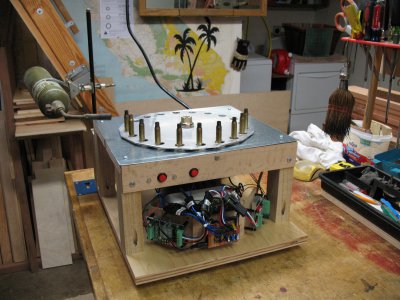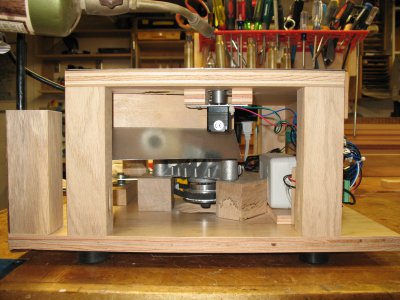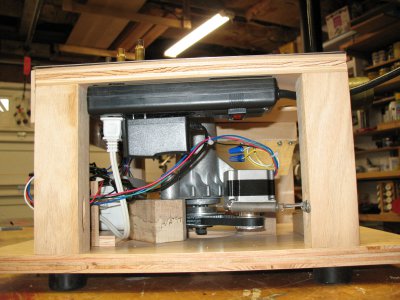Annealing is a process that is very hard to control for hobbyists. It is difficult for us to measure temperatures accurately, we have little knowledge of hardness of the brass before and after our heat treatment.
It is relatively easy to make a machine that provides consistent exposure to a heat source so that however much annealing (if any) is actually being done, is done equally to each case.
The temperature to use is influenced by the time of exposure. Higher temps means less time. More time means less temperature. A certain level has to be reached for annealing to happen, 450 deg F is not enough for our purposes but it is relatively easy to instantly ruin cartridge brass by overheating it. I agree with what derf wrote above.
The 'annealing' I have done was based on the color of the brass. The brass was clean and shiny to start with, but not resized. It was heated to barely starting to glow a maroon (dull red) color. Then held for 5 seconds at that temperature (whatever it was). Brass had to be still shine a bit after the process. This gives me the results I want. I know that the brass has been 'deadened' some based on its dimensions after resizing.
I do not like Tempilac because it is a threshold indicator that does not show by how much you exceed the threshold. That being said, if you have many cases to anneal, a range of different Tempilac bottles can help in setting up an annealing machine to determine if you are in the operable range.
Experimenting is key to getting your process right for you based on how your brass acts.
Bear in mind that annealing has an effect on what is referred to as neck tension. Not just from a change in springiness of the brass but also because it can burn off any carbon in the necks. Even if the necks are clean to start with, annealing will change the surface inside the neck. There is a good case to be made for a 'light' annealing after every firing OR only rarely.




